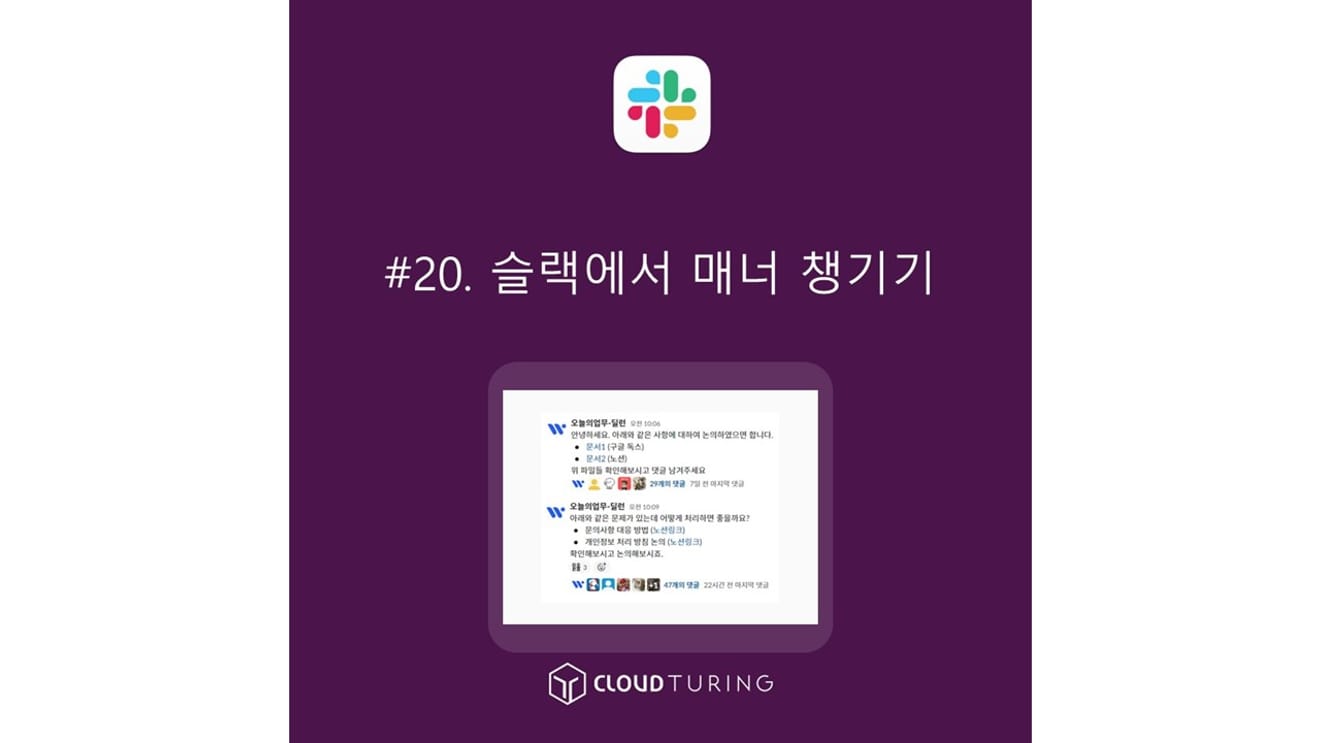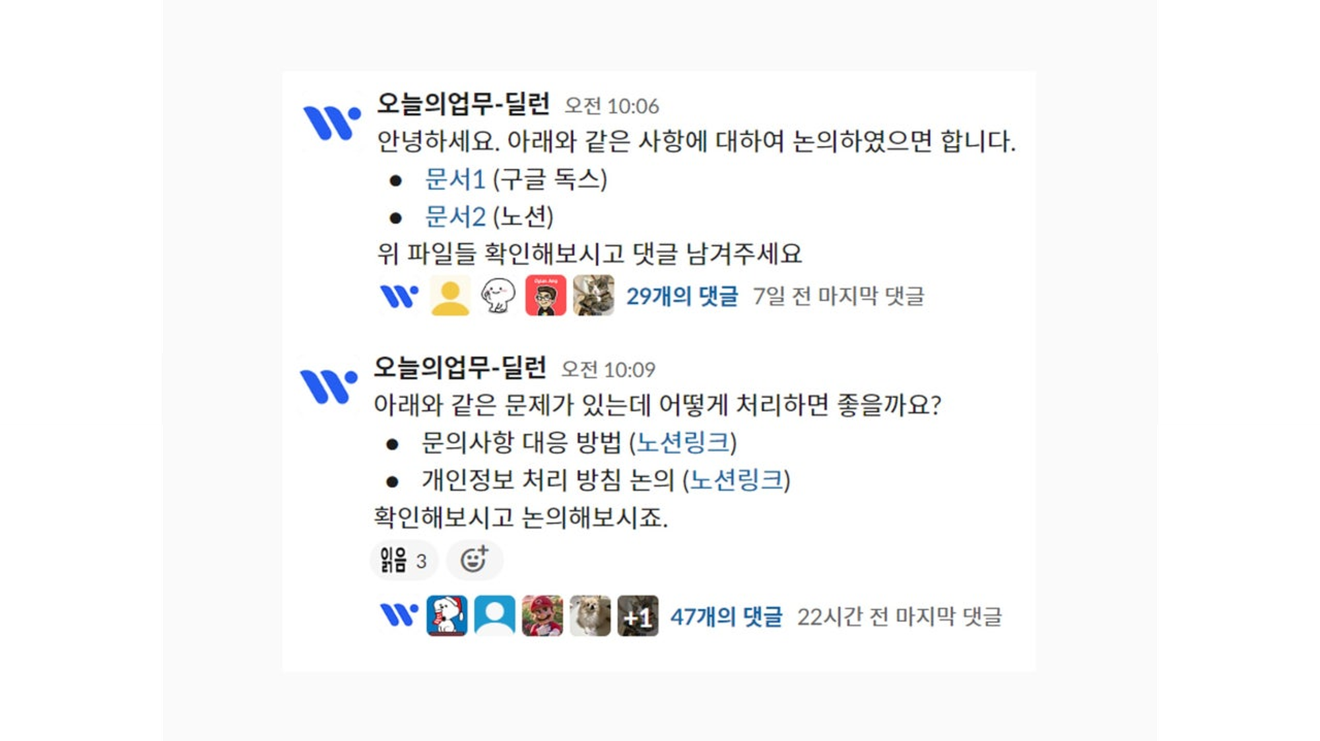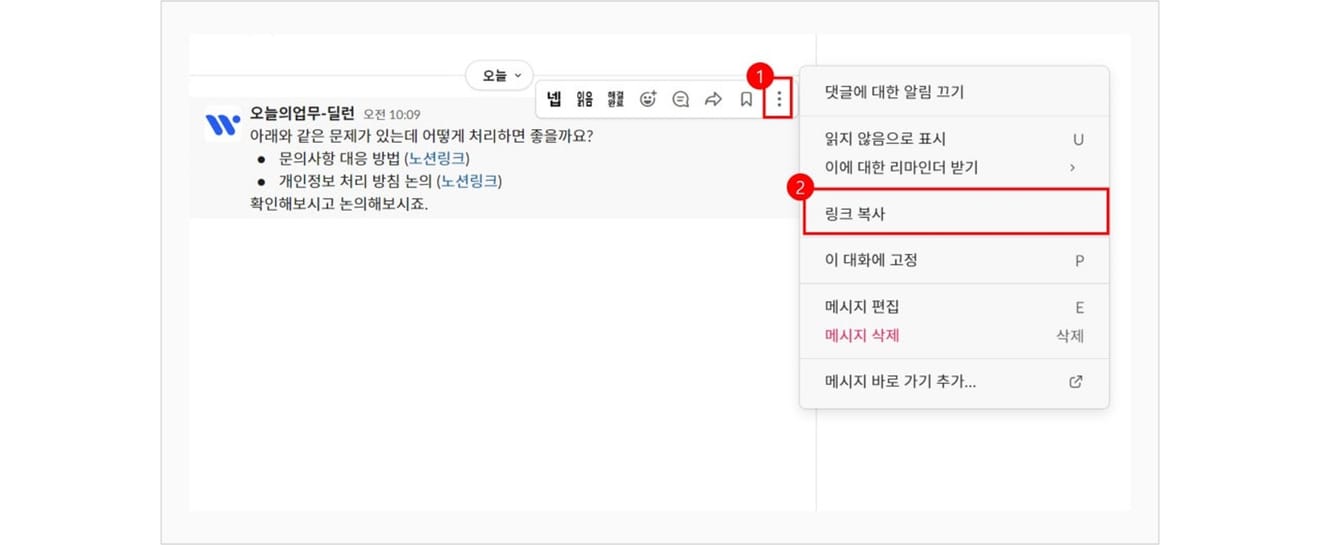Subject
- #Slack Etiquette
- #Communication
- #Work
- #Collaboration Tools
- #Efficiency
Created: 2024-11-12
Created: 2024-11-12 12:15

When using Slack at work, considering that many members of the company are using it simultaneously, you should use it with a certain degree of etiquette. I remember reading an article about Slack usage culture in Japan a while ago, and it described how meticulously it is used. In any case, maintaining certain rules at work makes communication more efficient, and it shows consideration for others, right?!
By the way, the order of the items below does not indicate priority. Since they are all important, I recommend reading them carefully!
When mentioning someone in Slack, it's better to list the recipients first and then those you want to CC (carbon copy).
By separating them this way, you can distinguish between those who need to respond and those who need to be informed, reducing excessive confirmations and work burden.
Let's not mention irrelevant people. It's also important not to overuse @here, @channel, and @everyone.
It's almost the same as email etiquette.

Unlike KakaoTalk, Slack doesn't show a count of unread messages. This is because the structure is group-based rather than 1:1. Therefore, it is difficult to know whether the other party has read the message. So, it's better to reply quickly once you've read it. Since even replying with "Yes," or "I've read it. Just a moment," requires some effort, registering and using frequently used emojisis also a good method.

Of course, when a "read" emoji is shown, it should be understood as "I have read it," and not as "Yes, please do that," or "I agree."
While immediate replies are sometimes possible, time may be needed for consideration or careful reading before replying. Your inquiry may be urgent, but the recipient may also be concentrating on their work or dealing with a pressing matter.
Therefore, it's important to be prepared to wait a while.
The person who asked the question may be waiting. As mentioned above, while you shouldn't expect an immediate reply, there may be cases that need urgent handling. If you need time to think or verify after receiving the message, it's better to respond first.
"Just a moment. I'm in a meeting.", "I'll check and get back to you within 20 minutes.", "Just a moment. I'm busy with another task, I'll reply within 15 minutes." Providing such specific suggestions shows consideration for the other person.
Of course, if a response is possible within 5 minutes, clicking the "read" emoji is another option.

It's better to include the main points in your initial message. Sending a message in installments after initially mentioning someone causes fatigue from waiting to read the whole thing.
It also saves the recipient's time.

Messaging like the image on the left will leave people waiting impatiently!
Of course, once the conversation has started, you can reply in installments depending on the situation. (Because it's a conversation from that point onwards; the first message is about conveying the topic.)
There can be difficulties in communication through text. We know that it's often difficult to understand the meaning of a conversation without the inclusion of intonation. In such cases, it's better to use Slack's video call feature or make a phone call to resolve the issue. There may also be urgent matters to handle.
It's better to communicate in public channels whenever possible.
In public channels, even if others haven't mentioned it, there are times when everyone learns something they might have previously been unaware of. If a reply is incorrect, someone else can correct it. Therefore, unless a private conversation is necessary for security reasons, it is better to conduct work-related conversations in public channels. This will reduce repetitive questions and improve work efficiency.
Therefore, it is important to have conversations that match the purpose of each channel, and to create and manage channels properly according to each project.
So, the importance of channel managementcannot be overstated.
It is not desirable to have a continuous stream of posts on a single topic. It's difficult to find the topic, and it can be confusing as to whether it is a relevant conversation. Therefore, it is better to use the comment (thread) function when discussing opinions on a single topic post. Also, if a mention was made initially, subsequent threads will automatically mention the person. If you've replied to the main post, even once, the person is automatically mentioned. (It appears in [Your Activity])

You can share posts from other channels during a conversation.
Even when having a conversation in a channel tailored to a specific purpose, there may be cases where more and more people join the conversation and it expands. Sometimes, the topic expands to another project. In such cases, it's difficult to start a discussion again from scratch in another channel, so we use the function to share the post. By sharing the main post, those who are not aware of the content can view it by clicking the link.
This is also why utilizing threads in conversations is important.

Clicking option 1 or 2 will take you to the relevant message.

1. Hover your mouse over the message you want to copy.
2. Click the three-dot button.
3. Click the [Copy Link] button.
4. Press Ctrl+V to paste it into the message you want to post, write your message, and send it.
"Manners maketh man", right? In addition to the above points, maintaining basic manners in communication will lead to more efficient and comfortable work.
Comments0